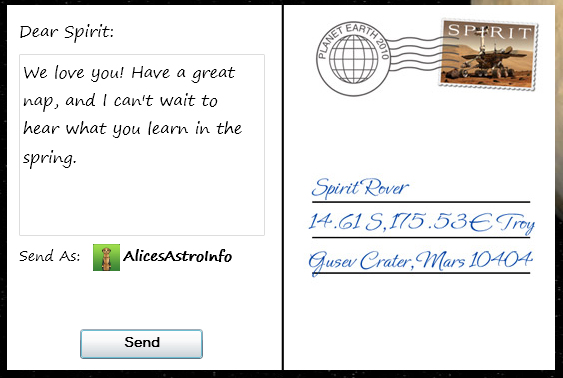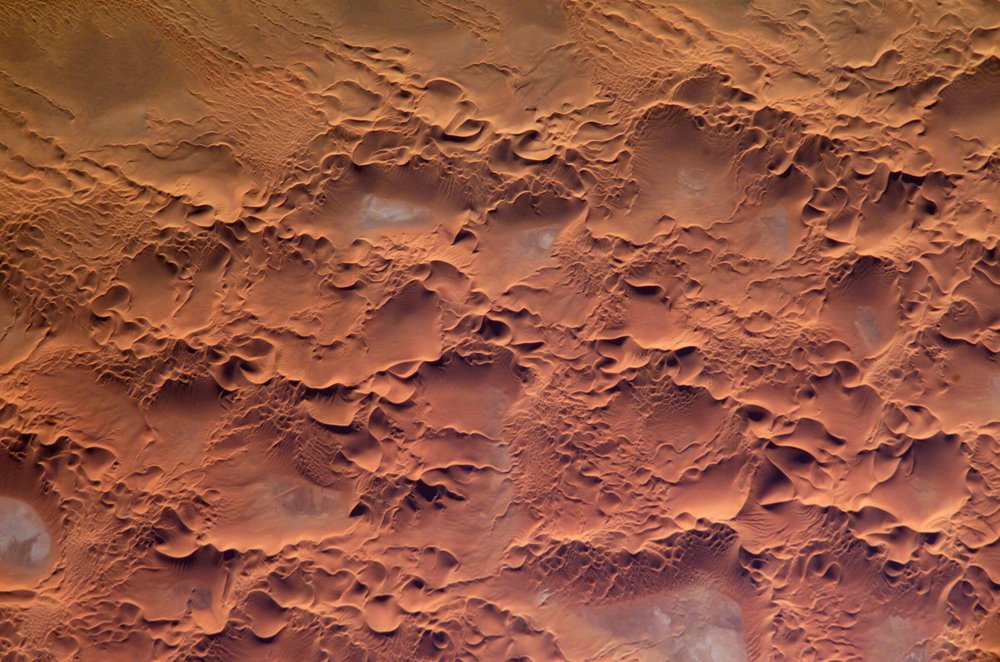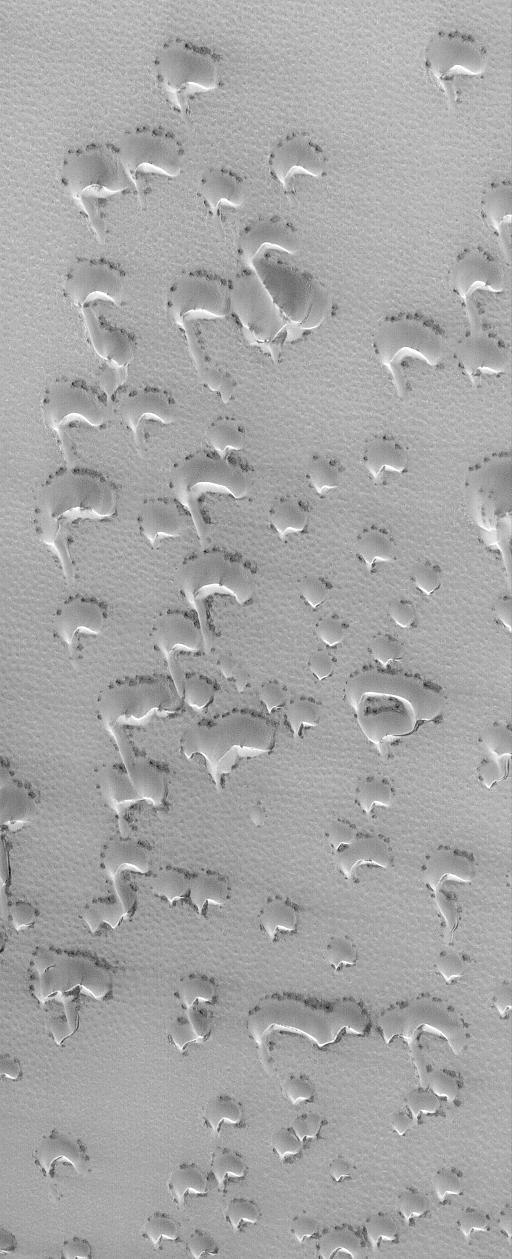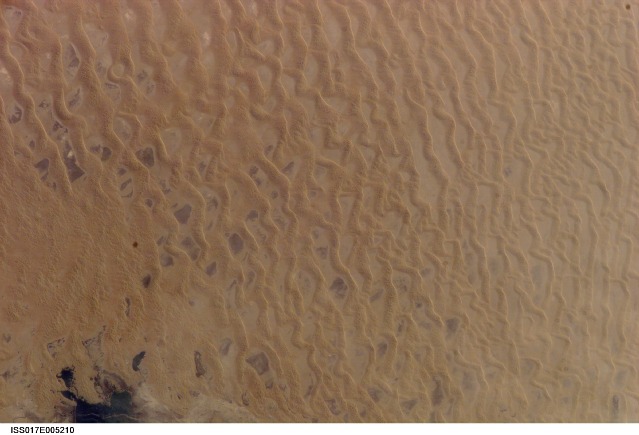Archive for 2010
 Wednesday, January 13, 2010
Wednesday, January 13, 2010
Interactive Online Planetarium computer lab. Handout. Website choice 1. Website choice 2.
We covered lunar phases and reviewed for next week’s quiz.
Homework: Astronomers.
 Monday, January 11, 2010
Monday, January 11, 2010
We covered basic directions in the sky: Right Ascension and Declination.
We also began seasons and the cycles of the sky: days, months, and years.
 Wednesday, January 6, 2010
Wednesday, January 6, 2010
2010_01_07 LP03 What’s the Scope
Homework: 2010_01_07 HW01 Telescopes (Due 1/11/2010 despite what the file says)
Please read for Monday and highlight the words/sentences you don’t understand: The Kepler Five.
 Monday, January 4, 2010
Monday, January 4, 2010
2010_01_04 LP01 How Far is Far
Powers of Ten: http://vimeo.com/1066547
FAR: http://www.youtube.com/watch?v=dF2HG1PVZok
A Glorious Dawn: http://www.symphonyofscience.com/
 Astronomy 100 – Winter 2010 – SSCC
Astronomy 100 – Winter 2010 – SSCC
2010 Winter Astro 100 Syllabus for South Seattle Community College
Course Calendar:
Notes on Grades:
Most of our assignments are graded out of 50, so here are the letter-grade breakdowns for normal assignments:
A = 45
B = 40
C = 37.5 (this level C keeps you at an average of 2.0/4.0)
C = 35 (minimum C)
D = 30
![]()
~ A l i c e !
 A Challenge for Artists! Spirit at Troy
A Challenge for Artists! Spirit at Troy
 Update: This is the first event I’m officially hosting as one of NASA’s volunteer Solar System Ambassadors!
Update: This is the first event I’m officially hosting as one of NASA’s volunteer Solar System Ambassadors!
Well, Spirit is now a station at Troy rather than a rover somewhere south of Mars’ equator. Time to have some fun, while the drivers try to back her into the perfect parked position to get Sun on those solar panels!
Spirit Embedded at Troy
I know there’s lots of you artists out there itching to do some science illustration. We don’t have cameras that can show us what it looks like for Spirit to be stuck. Odd, isn’t it? There are what 6? 7? cameras onboard Spirit, and yet, that’s just the problem, they are all ON BOARD Spirit. We can see bits of her, but not the her whole body.
So, draw, photoshop, paint, contstruct a picture of Sprit at her new home and send it on over here.
Skill Level
This competition is for kids and adults. Entries will be divided by me into “professionalish artists” and “doodling around and having fun artists.” There will be winners in both categories. For instance, if you’re really good at photoshop, but you just do it on your own time you’ll probably get put in the “professionalish” category. If you’re 3 and just learning to hold a pencil (hopefully your parents will help you label your drawing so everyone knows what’s what) you’ll be in the “doodling around” category.
Rules
Submit digitally in a web-ready format to my e-mail address alices astro info at gmail dot com (all one word, make that at an @ etc). File should be high enough quality to print. If you’d like to submit on paper e-mail me and I’ll give you an address.
I’m making the choices. I’ll be fair.
Deadline: February 13 – Let’s put them up on Valentine’s day and show Spirit’s rover team that we love them!
Prizes?
Everyone
- A copy of your picture will be displayed somewhere interesting, where lots of people can see it!
- (Until i run out) – Lenticular postcards from NASA (oooh! pretty)
- A digital copy will be shared with NASA to show the Spirit drivers how much we appreciate their hard work.
Featured “Winners”
(You are all winners, just for participating) but there will be one chosen from each category
- A very awesome lenticular postcard from NASA.
- A copy of your picture will be displayed on this blog.
- Got a suggestion that would be meaningful to you and wouldn’t cost me much? I’m listening!
Liability
If you are under 18, please sign your piece with your first name only, and have your parents send me a message saying it is okay for me to post your picture and your first name.
![]()
~ A l i c e !
 Stationary Science: Spirit at Troy
Stationary Science: Spirit at Troy
Well, the “Free Spirit” campaign is over, she’s staying at Troy. Doug McCuiston, the director of the Mars Exploration Program says “We do not believe that Spirit is extractable.” He maintains that they might free her by accident, but the goal now is to position the solar panels to make it through the Martian winter, so she can wake up in spring and begin some amazing cool new stationary science.

SIMULATED (but none-the-less-awesome) Image from Stuart Atkinson http://cumbriansky.wordpress.com/2010/01/26/a-very-big-day-for-spirit/
Positioning for Winter
Most important now, is making sure Spirit has enough power to keep her instruments warm. Currently her solar panels are tilted slightly away from the Sun. The team is trying to back Spirit a little ways up the hill behind her, which would point the panels towards the Sun. They have already succeeded in moving her backwards about 20 cm, so hopes are high that she’ll get to the best possible position.
A note on “backwards” – Spirit normally drives backwards, and when she got stuck she was driving backwards in the southerly direction. As they move her now, they are still moving her backwards and south – attempting to back her up the hill.
Emily quotes John Callas (project manager, Mars Exploration Rovers) who says they “estimate 3 weeks of driving activity, handful of drives left. Around March-April will be last images before winter hibernation.”
Upcoming Science
Just because she’s stationary does not mean Spirit is done. The team has plenty of science planned for her including:
- “Fully characterizing” (studying in depth) the soil around her. The soil is full of sulfate salts which geologists think formed in fumaroles (steam vents).
- Watching the long-term and seasonal changes in a specific location on Mars.
- Working on determining if Mars has a solid or liquid core (I missed the “how” of this, but it may have something to do with the last experiment they mentioned:
- If Spirit sends out a continuous radio signal, we can monitor that signal closely which will allow us to get a very detailed map of Mars’s orbit, rotation, and precession (wobble in the axis of rotation). We can’t do this with a rover, only with a lander.
Send a Postcard to Spirit
JPL has set up a website where you can “send” a postcard to Spirit, and see what others are sending her. Check it out! Here’s mine:
Want More?
Now a Stationary Research Platform, NASA’s Mars Rover Spirit Starts a New Chapter in Red Planet Scientific Studies – NASA Press Release.
What Season is it on Mars? – Emily’s wonderful calendar, and a program to determine the time anywhere on Mars.
![]()
~ A l i c e !
 Mars Calendar
Mars Calendar
Thank you Emily Lakdawalla!
I’m always trying to figure out what season it is on Mars, and she’s got it all calculated out. Check out her detailed and easy to reference Mars calendar.
A Sneak Peek
| Northern Spring / Southern Autumn | Northern Summer / Southern Winter | Northern Autumn / Southern Spring | Northern Winter / Southern Summer |
|---|---|---|---|
| 2009 Oct 27 | 2010 May 13 | 2010 Nov 13 | 2011 Apr 09 |
That data is entirely from Emily.
Look for the next post on Freeing Spirit.
![]()
~ A l i c e !
 Martian Adventures: A Tale of Two Robots
Martian Adventures: A Tale of Two Robots
Opening today!
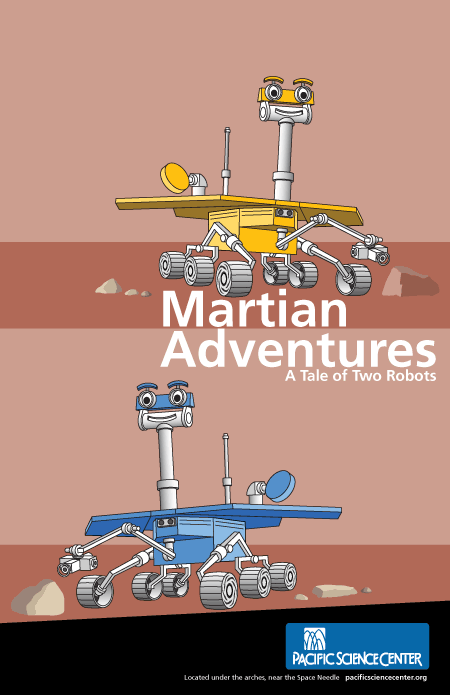
To go along with Pacific Science Center’s Facing Mars exhibit and Roving Mars IMAX film, we’ve created a new planetarium show.
Come hear stories about the adventures of NASA’s Mars Rovers, Spirit and Opportunity. Make your own decisions regarding some of the challenges they’ve faced and learn to find Mars in tonight’s sky. View photos of the Martian surface that are less than a week old, and root for the rovers to keep on roving! Ticket required (FREE tickets for Pacific Science Center members!) 40 minutes – ages 4 and up. Children under 4 are not admitted.
Go to pacificsciencecenter.org for plenty more information about the exhibit and both shows.
RSVP to our Facebook event, and show your support!
When is it Showing?
Some further notes on the show:
Since we wanted a show to complement Facing Mars, I tried to write a show that encompassed the experience of the journey to Mars and what you might face while there – just as the exhibit does. Unfortunately, we have not yet sent people to Mars so I decided to focus on the two robots, Spirit and Opportunity, who seem to have captured the hearts and imaginations of people all over the world. Somehow Spirit and Opportunity (or “Oppy” as we call her) have become beloved pets through whom we can visit a small portion of this alien world.
We were also trying to avoid just another “Red Planet” show, a show listing the most commonly-known facts about Mars: it’s red, it’s got the largest volcano in the solar system, it has the largest valley in the solar system, it has seasonal dust storms, etc. Even if you didn’t already know those facts, you’ll find them in almost any book, TV show, or movie about Mars. We wanted our show to be different.
I also recently attended a storytelling workshop with Jay O’Callahan, who wrote the incredibly moving story of NASA’s first 50 years, “Forged in the Stars”. Good storytelling transports us into the story, and Jay is a master at that. I was inspired by the workshop to begin writing “fact-tales” as my co-worker Michael Bowers calls them; thus “Martian Adventures: A Tale of Two Robots” was born. I cannot claim to be anything like the master that Jay O’Callahan is, but the planetarium staff have taken the stories I outlined and turned them into exciting adventure stories, weaving their words so you hope along with mission control that the rovers will persevere.
The show isn’t all fact-tales though, this is Pacific SCIENCE Center, and “interactive” is one of our watchwords. During a portion of the show guests get to conduct their own analysis of the surface of Mars. We update the show every week with the very newest pictures from the rovers, pictures so new there aren’t usually press releases from the scientists explaining them. So, you get to be the scientist. The planetarians will lead you through the photos asking you to make scientific observations and put forth your own hypotheses about what you see in the pictures. A warning about this for people who need to know “the” answer: the planetarian will not be able to tell you what the best answer is. As I said above, the scientists haven’t had a chance to release their findings about these pictures. That’s what I love about this portion, if you want an answer you have to think of one that matches all the clues you see, you have to be a scientist. You can always check NASA’s website in a few weeks and see what conclusions the scientists have come up with.
I intended this show to appeal to young and old alike, but the story sections might be a little long for children under six or seven. Also, as usual, children under four are only admitted to Preschool All-Stars – our short show expecially for preschoolers and their families. I recommend Martian Adventures: A Tale of Two Robots for anyone who likes discovering and stories.
Oh, and of course we show you where to find Mars in tonight’s sky!
![]()
~ A l i c e !
 Dunes on Mars – New HiRISE Images
Dunes on Mars – New HiRISE Images
Oh the beauty that can result in faraway places untouched by human interference:
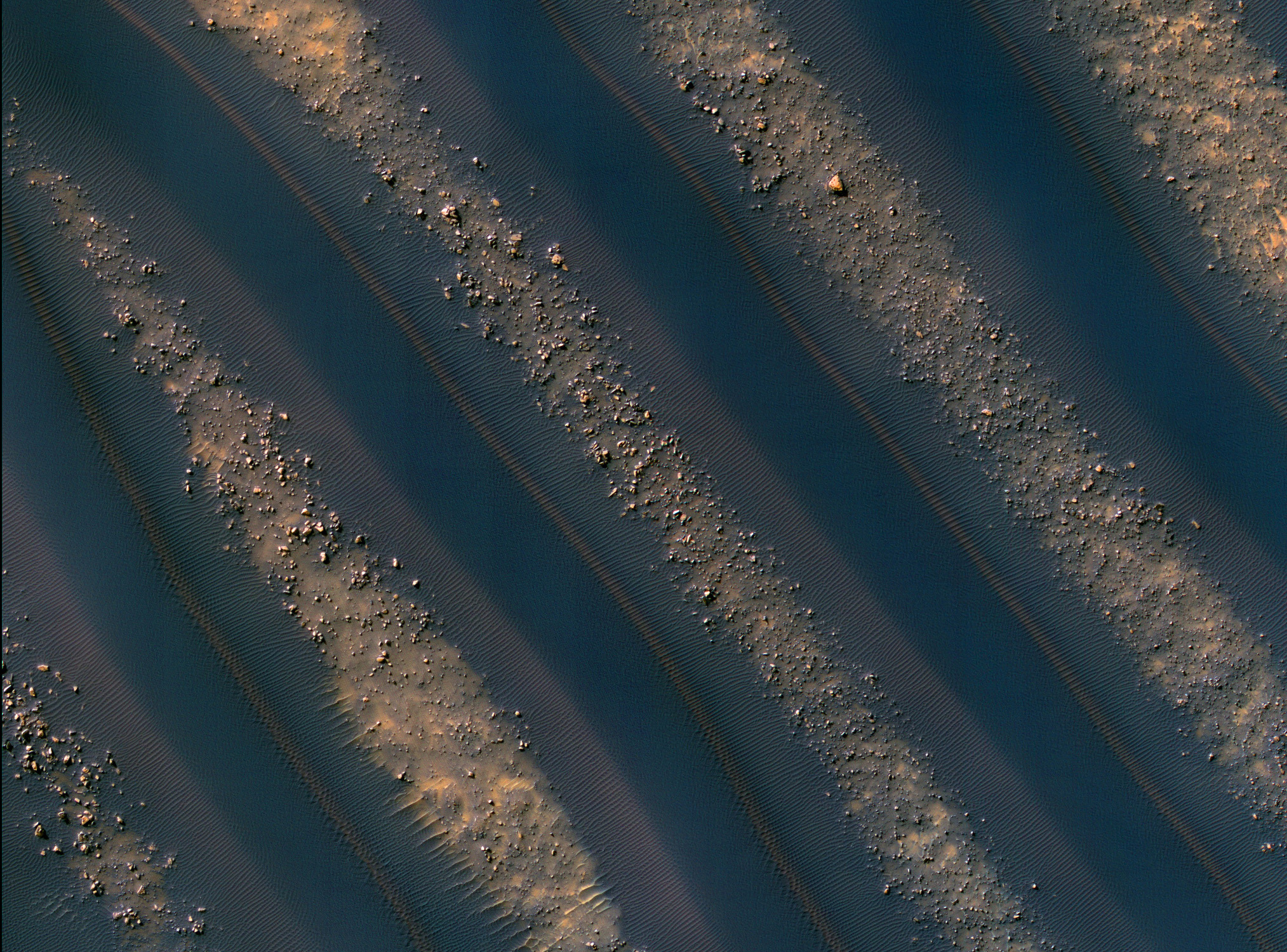
Dunes from a crater in Noachis Terra, west of the giant Hellas impact basin. Image credit: NASA/JPL-Caltech/University of Arizona
I’m getting so excited about Facing Mars coming up at Pacific Science Center. Just a little over one week to go! So, to keep myself entertained, I’ve been looking at some new Mars stuff.
The 10-Second Summary (What you need to know)
- First, click to make that picture bigger. You’ll be amazed at the detail. The boulders are in between the dunes.
- Second, dunes are common on Mars, being a planet covered in dust and sand.
- Third, Mars Orbiter (home of the HiRISE instrument) was not functioning for a while there, but it started working again – and this picture is one of the new ones (from late December 2009). HiRISE is a camera that takes some of the most detailed and breathtaking images we’ve ever seen. It can see the rovers’ tracks from orbit – it is that good.
About Dunes
There are a few basic types of dunes, and they all depend on the angle and changeability of the angle of the wind, the surrounding landscape (are there trees? mountains? bushes?), and the size of the particles that make up the dune.
Longitudinal Dunes
Longitudinal dunes tend to form parallel to the primary wind direction. The picture above from HiRISE is a perfect example of longitudinal dunes.
Star Dunes
Star dunes occur in areas with widely shifting wind directions.
Parabolic Dunes
Parabolic dunes occur in an area where the wind direction is constant, and their open side faces into the wind.
Crescent (Barchan) Dunes
Crescent or barchan dunes occur in an area where the wind direction is constant, and their open side faces away from the wind. They are very easy to confuse with parabolic dunes.
Transverse Dunes
Transverse Dunes are very similar to Longitudinal Dunes – except that they form perpendicular to the wind, not parallel. You’ve seen “dunes” like this – the waves in the sand are created by the water in the same way the wind creates these larger transverse dunes.
Want More?
The Mars Orbiter HiRISE Press Release (more detailed info on the above picture itself)
![]()
~ A l i c e !

